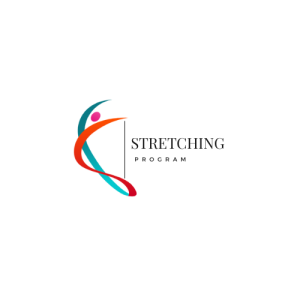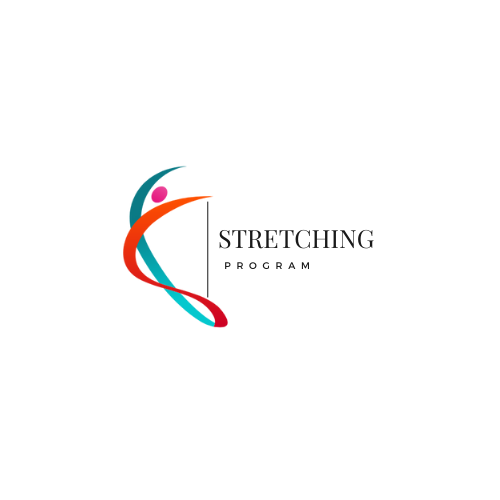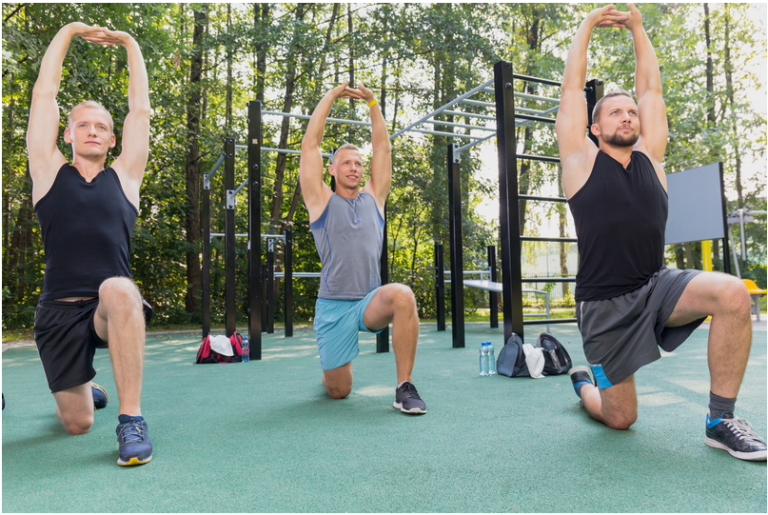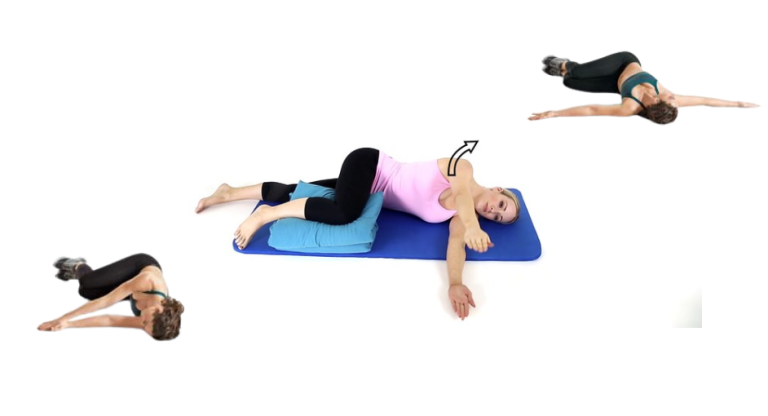
Stretching Exercises for Shoulder Impingement Syndrome

As someone who has experienced shoulder impingement syndrome, I know firsthand how debilitating the pain and discomfort can be. Shoulder impingement occurs when the tendons or bursa in the shoulder joint become compressed, leading to inflammation, pain, and limited mobility. There are many causes of shoulder impingement, including overuse, poor posture, and muscle imbalances, which are also common causes of shoulder pain.
Thankfully, effective stretching exercises can help alleviate the pain and prevent further damage. I will share some of the most effective stretching exercises for shoulder impingement syndrome in this article. I will also provide tips for managing and preventing shoulder impingement and answer some frequently asked questions about the condition. By the end of this article, you will better understand how to manage your shoulder impingement and improve your overall shoulder health.
Related Posts: Unlock Your Potential with These Top Lats Stretching Exercises
Key Takeaways
Understanding Shoulder Impingement
As someone who has experienced shoulder impingement, I know how frustrating it can be. Shoulder impingement syndrome (SIS) is a common condition that affects the rotator cuff tendons, causing pain and discomfort in the shoulder. In this section, I will provide an overview of the anatomy of the shoulder, what causes shoulder impingement, and how to identify symptoms and diagnosis.
Anatomy of the Shoulder
The shoulder is a complex joint that consists of the humerus (upper arm bone), scapula (shoulder blade), and clavicle (collarbone). The rotator cuff is a group of four muscles and tendons that attach the humerus to the scapula. The subacromial space, which, when getting pinched, causes the common shoulder pain, is the area between the acromion (a bony projection on the scapula) and the rotator cuff tendons. The bursa is a fluid-filled sac that helps reduce friction between the rotator cuff tendons and the acromion.
What Causes Shoulder Impingement?
Shoulder impingement occurs when the rotator cuff tendons become inflamed and swollen, causing them to rub against the acromion. This can be caused by repetitive overhead activities, such as throwing a ball or painting a ceiling. Other causes of shoulder impingement include poor posture, muscle imbalances, and degenerative changes in the shoulder joint.
Identifying Symptoms and Diagnosis
The most common symptom of shoulder impingement, a common cause of shoulder pain, is pain in the front or side of the shoulder, which can radiate down the arm. Other symptoms common in people with shoulder impingement include weakness in the shoulder and difficulty reaching overhead, especially when the elbow is bent at 90 degrees. A physical examination is usually performed to diagnose shoulder impingement. This may include a range of motion tests, strength tests, and special tests, such as the Neer and Hawkins-Kennedy tests. Imaging tests, such as X-rays or MRI, may also be used to confirm the diagnosis.
Understanding the anatomy of the shoulder, what causes shoulder impingement, and how to identify symptoms and diagnosis is important for developing an effective treatment plan. In the next section, I will discuss a few stretching exercises to help alleviate the pain and discomfort associated with shoulder impingement.
Effective Stretching Exercises

My physical therapist trusts that he often recommends stretching exercises to patients who suffer from shoulder impingement syndrome. These exercises can help to relieve shoulder pain and improve mobility in the affected side. This section will discuss some of the most effective stretching exercises at home.
Exercises to Avoid
Before we start, it’s important to note that not all exercises are equal for people with shoulder impingement. Some exercises can make your shoulder impingement worse. Avoid exercises that involve raising your arms overhead, such as military presses or pull-ups. These exercises put a lot of stress on the muscles and tendons in your shoulder and can exacerbate your symptoms.
Recommended Stretching Techniques
To feel a stretch in your shoulder, try the following techniques:
Strengthening the Shoulder
In addition to stretching, it’s important to strengthen the muscles in your shoulder to prevent future injury. Resistance band exercises are a great way to strengthen the rotator cuff muscles in your shoulder and to help fix shoulder impingement. Try the following exercises:
Incorporate these stretches and exercises into your exercise program to help alleviate your shoulder impingement symptoms. Remember to start slowly and gradually increase the intensity of your workouts. If you experience pain or discomfort, stop the exercise and consult with your physical therapist.
Managing and Preventing Shoulder Impingement
If you’re experiencing shoulder impingement, taking immediate action for relief is important. Here are some things you can do to alleviate the pain:
Immediate Actions for Relief
While these immediate actions, such as shoulder impingement stretches, can provide temporary relief, developing long-term strategies to prevent shoulder impingement from recurring is important.
Long-Term Strategies
Remember, the time it takes for shoulder impingement to go away and, hence, for the shoulder pain to reduce varies from person to person. To achieve the best results, it’s important to be patient and consistent with your treatment plan. By taking immediate action for relief and adopting long-term prevention strategies, you can manage shoulder impingement and prevent it from recurring.
Related Posts:
Unlock Your Flexibility Potential with Stretching Exercises!
Frequently Asked Questions
What exercises can I perform at home to alleviate shoulder impingement symptoms?
If you are experiencing shoulder impingement symptoms, you can perform several shoulder impingement stretches at home to alleviate pain and improve mobility. Some recommended exercises include scapula squeezes, scapula push-ups, chest stretches, and front shoulder stretches. These exercises can help strengthen the muscles in your shoulders and improve your posture, reducing the pressure on your rotator cuff tendons.
Which exercises should I avoid to prevent aggravating my shoulder impingement?
While it is important to exercise your shoulders to promote healing, some exercises can aggravate your shoulder impingement and make your symptoms worse. Exercises involving overhead movements, such as presses or pull-ups, should be avoided. Exercises involving heavy weights or repetitive motions can also aggravate your shoulder impingement.
What are the top recommended exercises for early-stage shoulder impingement rehabilitation?
If you are in the early stages of shoulder impingement rehabilitation, some of the top recommended exercises include external rotations, internal rotations, and scapula retraction exercises. These exercises can help strengthen the rotator cuff muscles and improve your shoulder stability.
How can I incorporate resistance bands into my shoulder impingement exercise routine?
Resistance bands can be a great addition to your shoulder impingement exercise routine, as they can help to provide resistance and improve your shoulder strength. Some recommended exercises, where your elbow is bent at 90 degrees with resistance bands, include external rotations, internal rotations, and rows. It is important to use the appropriate resistance level and perform the exercises properly to avoid aggravating your shoulder impingement.
What is the most effective way to promote healing in shoulder impingement?
In addition to performing exercises to strengthen your shoulders, there are several other ways to promote healing in shoulder impingement. Resting your shoulder and avoiding activities that aggravate your symptoms can help to reduce inflammation and promote healing. Additionally, applying ice to your shoulder for 15-20 minutes can help reduce pain and inflammation.
Which specific muscles should I focus on stretching to address tightness related to shoulder impingement?
Tightness in certain muscles can contribute to shoulder impingement, so it is important to focus on stretching these muscles to improve mobility and reduce symptoms. Some specific muscles to focus on stretching include the pectoralis minor, levator scapulae, and upper trapezius muscles. Stretching these muscles can help to improve your posture and reduce the pressure on your rotator cuff tendons.



